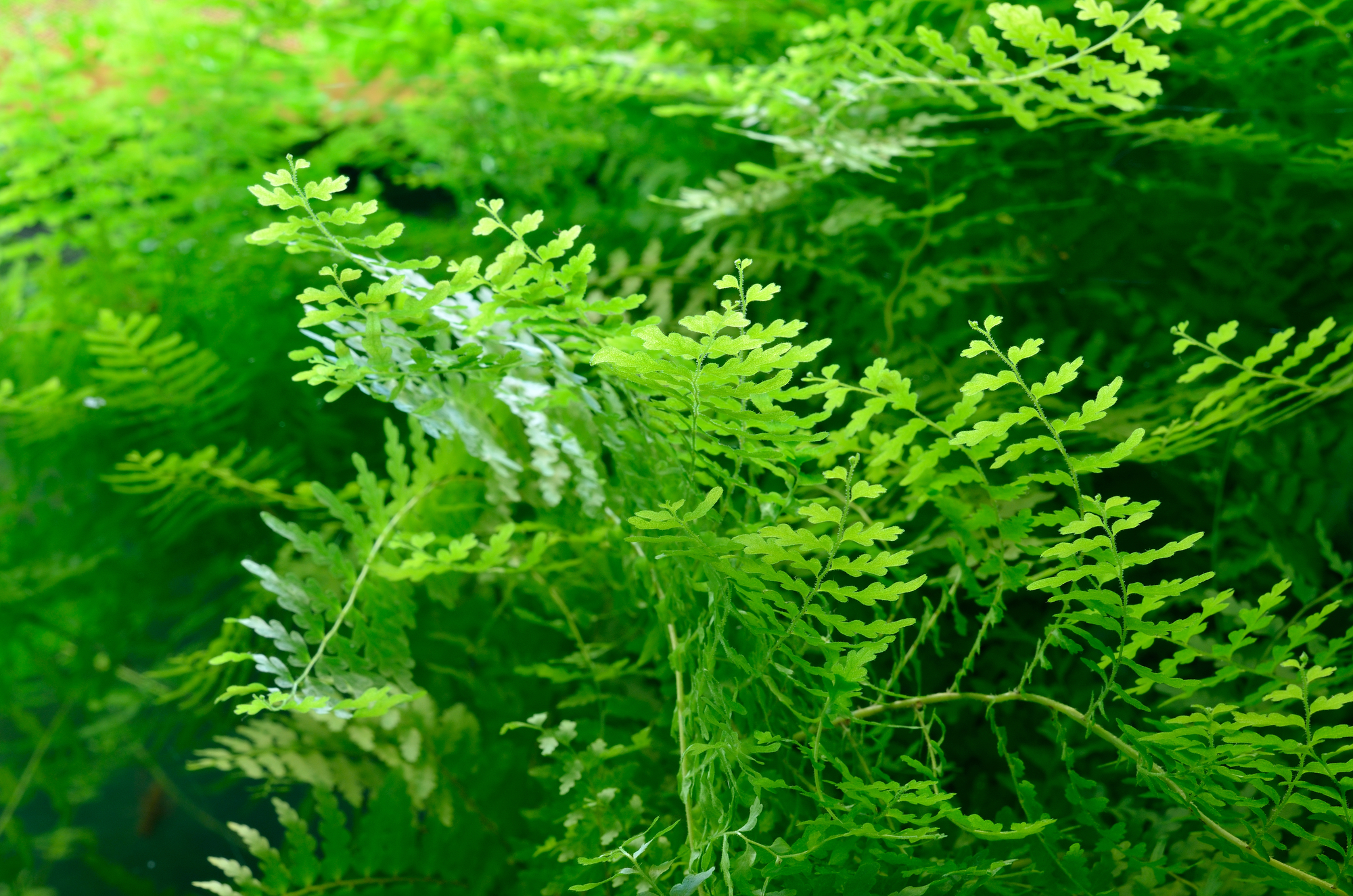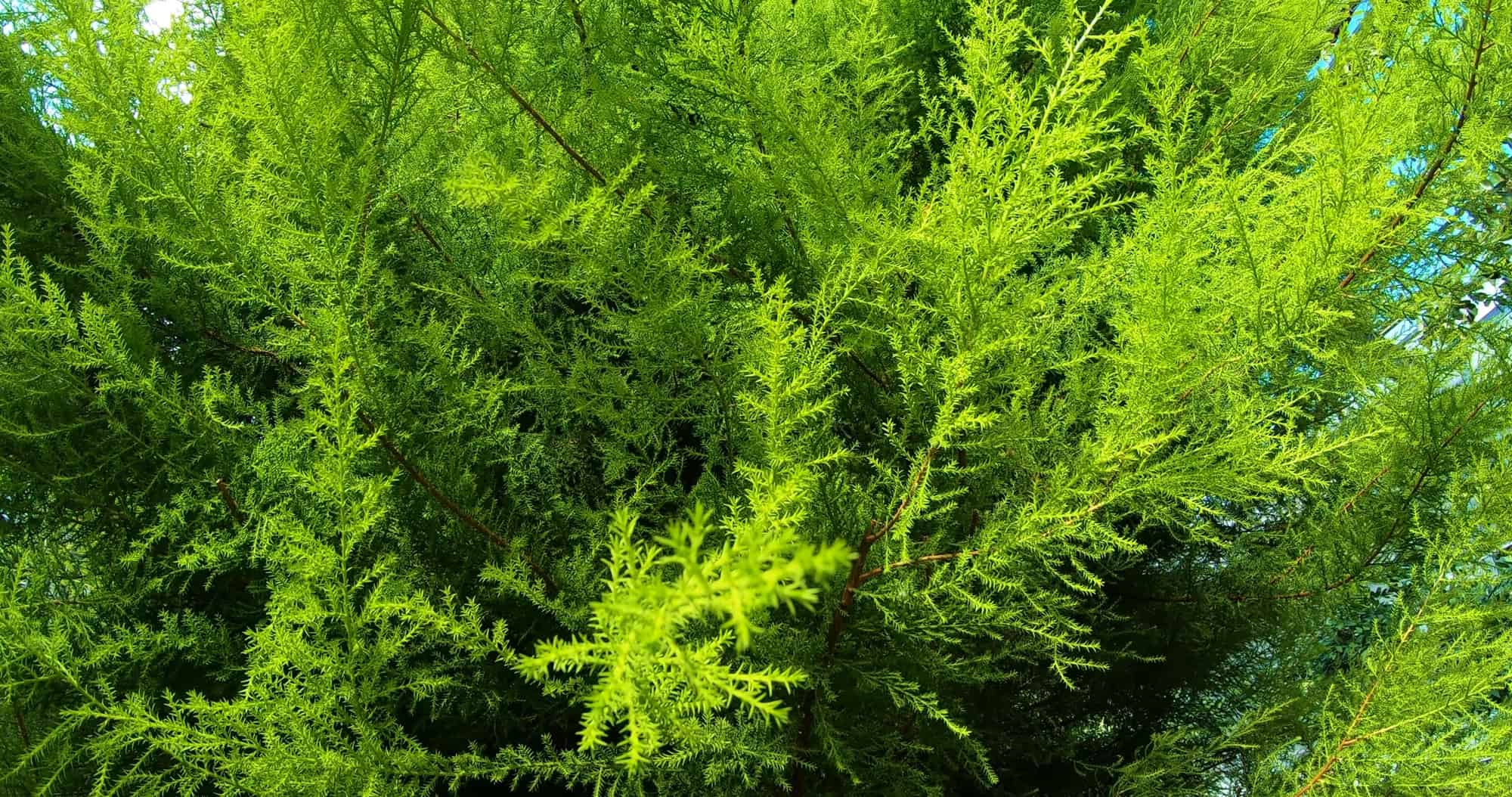[ad_1]
If you’re looking for an attractive, hardy, easy-to-grow aquatic plant to add to your setup, Java moss could be a good species to start with.
In this guide, we tell you everything that you need to know about growing and caring for Java moss so that you can get the very best out of this versatile, beautiful species.
What is Java moss?
Java moss belongs to the Hypnaceae family of plants that come from Southeast Asia, where you’ll see it growing on tree trunks, rocks, and river banks. However, the plant also grows underwater, which is why it is so popular in the aquarium hobby.
Java moss is probably the most popular and commonly seen of the freshwater aquarium mosses, largely because it is not fussy when it comes to water quality and lighting. For that reason, you can buy this plant in most good fish stores and online.
Name
There is some confusion over Java moss’s scientific name. Originally, the plant was known as Vesicularia Dubyana; however, it has been reclassified as Taxiphyllum Barbieri. The confusion surrounding the plant’s name comes from the Latin names having been wrongly matched with the plant’s common names.
For example, Vesicularia Dubyana, which is also called Singapore moss or Christmas moss, is totally different from Taxiphyllum Barbieri or Java moss. However, both species are classified under the same genus; Taxiphyllum.
So, we recommend that, when you’re buying plants, always ask for them by their Latin names to avoid confusion, especially when you’re buying online.
Benefits of growing Java moss
The plant is extremely useful for aquascaping thanks to its versatility and the natural, aged vibe it provides in a tank. Java moss is very easy to grow and is incredibly hardy. This delicate plant attaches itself to rocks, driftwood, and artificial aquarium decorations, and it can also be grown on the bottom of the tank to create a carpet effect. You can also grow Java moss on the walls of the tank to soften the overall look of the setup or use it to disguise your filter.
Also, the moss offers shelter for shy fish and fry, and it provides somewhere that eggs can adhere to in a breeding tank. Some fish species also like to feed on the plant, and the leaves provide an excellent place for infusorians to grow, providing plenty of food for newly hatched fry.
Finally, if you like to keep a few shrimp in your aquarium to keep algae under control, small invertebrates love to hide in the fragile fronds of Java moss.
Appearance

When Java moss is grown underwater, it has vibrant green leaves with much smaller leaves than the variety of the plant that grows on land.
The plant uses rhizoids to cling to surfaces. Rhizoids are purely there to hold the plant securely in place, and, unlike roots, they don’t provide the plant with nutrients. So, Java moss mainly derives what it needs from the water column and from light. For that reason, these plants appreciate fairly bright lighting.
Java moss care guide
So, as previously mentioned, Java moss is extremely easy to care for, and it’s almost impossible to kill! For that reason, this species is the perfect choice for a beginner.
In this part of our guide, we tell you how to provide the optimal conditions for Java moss to thrive in the home aquarium.
Aquarium requirements
Java moss will tolerate pretty much any water type. However, the ideal conditions for this plant are a moderate flow, soft, acidic water.
Water temperature
The water should be kept at a tropical temperature of between 69o and 75o Fahrenheit, although this species of moss will be happy in temperatures of up to 86o Fahrenheit. That said, it should be noted that the plant’s growth rate will be slower in warmer water. If your tank has cooler water, this aquarium plant will grow more quickly, and you will enjoy brighter healthier-looking plants.
Lighting
Java moss grows in all light conditions from low to high. However, you will see a difference in the plant, depending on the aquarium lighting that you have.
For example, if you have low lighting in your tank, the plant will be darker in color and more straggly in form than if grown in high lighting levels, which produce a more compact, denser plant. However, do bear in mind that the more bright light you have, the more likely it is that algae will grow in your tank, potentially smothering the Java moss and other plants.
Fertilizer
If you do have low light levels in your tank, it may be a good idea to add some form of fertilizer and CO2 to your aquarium to increase the growth rate of these aquatic plants.
Trimming and maintenance
How you allow your Java moss plants to grow is entirely down to your personal preference. If you want to, you can trim the plants, using aquascaping scissors to create specific shapes and looks for your tank. If you prefer, leave the plants to grow wild and simply remove dead leaves periodically as required.
Be careful if you decide to use aqua moss to cover your filters. Aquarium moss can clog your filters if it is allowed to grow too thick, so you must remember to thin out the growth regularly. Also, it’s so easy to grow Java moss that it will make a takeover bid for the whole aquarium if you’re not careful! If the plant does get very dense and thick, the middle of the plant won’t get sufficient nutrients because the water flow can’t reach it. In that case, the leaves will begin to turn brown, and the moss will become detached from its attachment point.
Algae
The only real potential problem that’s experienced when growing moss in aquarium settings is algae. Algae grow very rapidly if they are given enough light, especially if water conditions are poor. Once algae begin growing in moss, it’s incredibly stubborn and tricky to get rid of. If the problem is especially bad, the only solution is to get rid of the moss and begin again with fresh plants.
Sometimes, you can save your Java moss by very gently removing the algae with a very soft toothbrush. Alternatively, you could try using a chemical algaecide product that’s recommended for use in the aquarium.
However, prevention is always better than cure when dealing with algae. So, reduce the amount of light that your tank gets by limiting the hours of illumination that you have. If you’re not around to manually turn the lights off, invest in a simple timing device to do the job for you. By limiting the lighting in your tank to eight hours per day, you can effectively retard the growth of algae. Also, make sure that the water quality in the tank is excellent by carrying out weekly water changes and maintaining your filtration system correctly.
How to grow Java moss
Java moss for aquarium use can be grown in several ways, depending on how you want to use it in your fish tank.
Floating plant
The easiest way to grow the plant is to allow it to float as a surface plant. All you need to do is put the plant into your tank and leave it to its own devices.
Attached to something
The most popular way of growing Java moss is to attach it to something in the tank to keep the plants in place. To fix the moss to a piece of driftwood, rock, or some other form of decoration, lay the plant in a thin layer over the item that you want to attach it to and secure it there, using a piece of very thin dark thread or fishing line. It will take the plant a month or so to become securely attached, at which time you can carefully remove the thread.
Carpet or tank wall covering
Many aquarists like to grow Java moss as a carpet plant or as a covering for the tank walls. That effect gives your aquarium a lovely natural look that’s also a breeze to maintain.
To make a Java moss carpet, take two pieces of non-toxic mesh and some fishing line. Cover the mesh with a light layer of Java moss. You can use trimmings from your plant to do that, ensuring that they lay flat. Once the mesh is covered, put the second piece of mesh on top, using some fishing line to fix the two layers of mesh together.
Place the Java moss mesh sandwich into the tank. The plants will gradually begin to grow through the mesh creating a beautiful mossy bed that you can use to make a wall or floor covering. Alternatively, place some pieces of moss on the tank bottom and sprinkle a small amount of gravel over it to hold in place until it begins to grow and attaches itself to the substrate.
Trees
You can also create Java moss trees. To do that, take a piece of driftwood that you can stand upright, and that already has a basic tree shape with a few branches and a trunk. Using aquascaping adhesive, take small pieces of Java moss and stick them to the tree branches to create foliage. Trim away any excess untidy pieces to give the decoration a distinctive tree shape.
Place the finished Java moss tree into your aquarium. The moss will quickly begin to grow as if the tree was blooming.
Propagation
Propagating Java moss couldn’t be simpler. All you need to do is cut a piece off the plant and set it wherever you want it to grow. The plant will simply continue growing.
Availability and price
Java moss grows very easily in fish tanks and is one of the easiest aquatic plants to care for. For that reason, you can buy Taxiphyllum Barbieri in pretty much every fish store and online too. Thanks to its ease of propagation, the price of this aquarium moss is usually quite low at just a few dollars for a bunch.
In conclusion

You can grow Java moss in pretty much every aquarium. The plant is very tolerant of most water conditions and has lots of uses, from giving your tank a beautiful, natural look to providing shelter for timid fish species and newborn fry.
Java moss is extremely easy to grow, making it ideal for newbies to the hobby as well as seasoned aquarists. The main issue that you’ll have with growing this plant is that it can become clogged with algae. However, if you limit the hours of light that your tank has and keep the water in good condition, you shouldn’t have too much trouble with algae outbreaks.
[ad_2]
Source link
